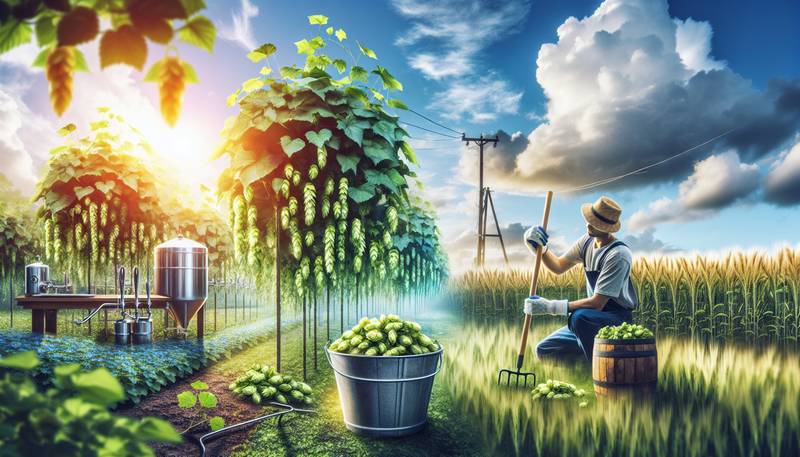Hops Haven: Growing Your Own Beer Garden

Getting Started: A Seed of an IdeaIf the thought of brewing your own beer sounds appealing, but you're not quite ready to don a lab coat and start experimenting with complex chemistry, fear not! Growing your own ingredients can be as satisfying as finding that last cookie in the jar, minus the guilt. Imagine plucking fresh hops straight from your backyard, giving you that instant sense of accomplishment that typically comes only after completing a crossword puzzle.Now, growing hops might sound like a daunting task, but with a touch of sun and perhaps a sprinkle of luck (or maybe just a lot of water), you can cultivate a backyard paradise resembling something out of a fairy tale—if fairies brewed beer, that is.Choosing the Right Hops: A Match Made in HeavenBefore you start your horticultural journey, it’s essential to choose the right hops. There are a variety of hop types, each giving your beer its unique flavor profile. Imagine trying to bake a cake without knowing whether to use chocolate or vanilla. It’s a recipe for disaster—or at least for a very confusing dessert.Here are some popular varieties to consider:- Cascade: This hop is the rock star of American brewing, providing floral and citrus notes. Just think of it as the beach ball at a summer party—everyone loves it.
- Saaz: Known for its mild aroma, this hop works wonders in lagers. It’s like the friendly neighbor who brings cookies but never visits uninvited.
- Centennial: Often referred to as a super Cascade, this one packs a bit more punch. It’s the cool cousin everyone wishes they had.
Choose wisely, because the wrong hop selection could lead to a beer that tastes like it was brewed in a sock.Preparing Your Garden: A Hop-portunity AwaitsNow that you have your hops selected, it’s time to prepare your garden. Hops are climbing plants, so prepare for a bit of vertical gardening—think of it as giving your plants a workout while simultaneously keeping them out of reach of any rampaging bunnies.Start by choosing a sunny spot. Hops thrive in full sunlight, so if your garden is overshadowed by a giant rubber duck (because who wouldn’t have one of those), consider relocating. Once you’ve secured the right location, dig up the soil and mix in some compost, because hops appreciate a good meal as much as anyone else does after a long day.Planting and Caring for Your Hops: Green Thumbs Unite!When it comes time to plant, you should ideally do so in early spring. Dig holes about three feet apart and give each hop plant a little home of its own. Think of them as roommates—give them space, but not too much. Watering will become your new hobby. Hops love water, but like a cat with a laser pointer, they can be quite particular about how they receive it. Keep the soil moist but not soggy—kind of like how you would want your cake: moist, not swimming! Fertilize every few weeks to keep them happy. They might not thrive on compliments, but they will appreciate the extra nutrients. Harvest Time: Hoppy Days Are Here AgainAfter several months of growth, the time will come to harvest your hops. You’ll know they’re ready when the cones feel dry and papery. Picture yourself gathering them like a proud parent collecting trophies at a science fair. Just be careful not to end up with a basket full of fuzzy green balls that resemble old gym socks. Dry them out, and soon you’ll be ready to brew your own beer. Trust me; there’s nothing quite like the feeling of drinking a beverage made from your very own garden. It’s like receiving a gold star in life—except much tastier.Raising a Glass to Your New Hobby: Cheers to New HeightsGrowing hops and brewing beer can be a delightful adventure. It’s not just about the beer; it’s about the journey, the sweat, and perhaps the occasional mishap involving sneaky raccoons or misplaced gardening tools. By diving into the world of hops, you’re not just cultivating plants; you’re cultivating memories, friendships, and perhaps a few questionable brewing experiments. So when you take that first sip of your homemade beer, allow yourself a moment of pride, ideally one where you’re not wearing your gardening gloves. You’ve earned it—cheers to that!
|
|







